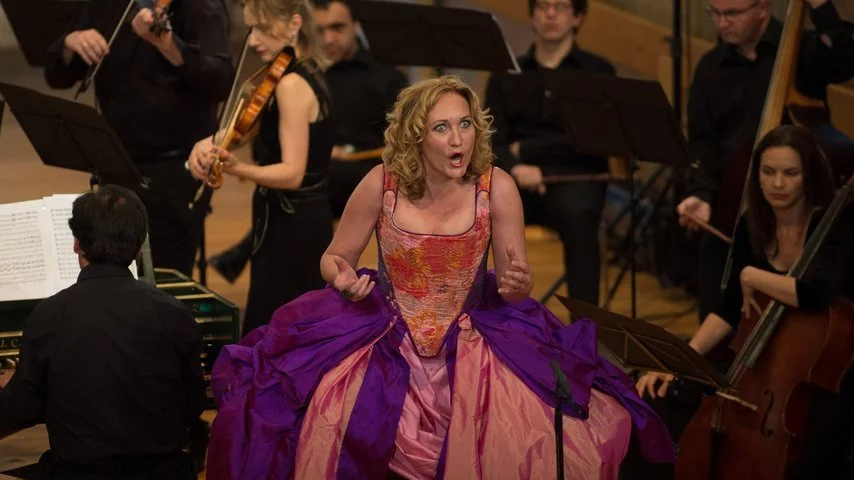Simone Kermes, Vivica Genaux, Cappella Gabetta
Simone Kermes, soprano
Vivica Genaux, mezzosoprano
Cappella Gabetta
Carlo Francesco Pollarolo (ca. 1653-1723) Ouverture Opera «Ariodante»
Giovanni Bononcini (1670-1747) «Spera che questo cor» from «Astianatte» (Bordoni)
Georg Friedrich Händel (1685-1759) «Scoglio d’immota fronte» from «Scipione» (Cuzzoni)
Attilio Ariosti (1666-1729) «Vorreste o mie pupille» from «Lucio Verro» (Bordoni)
Johann Adolph Hasse (1699-1783) «Priva del caro bene» from «Dalisa» (Bordoni)
Nicola Porpora (1686-1768) «Nobile Onda» from «Elisa» (Cuzzoni)
Johann Adolph Hasse (1699-1783) «Tu vuoi ch’io viva o cara» from «Cleofide» (Duett)
Nicola Porpora (1686-1768) Ouverture from «Orfeo»
Johann Adolph Hasse (1699-1783) «Va’ tra le selve ircane» from «Artaserse» (Cuzzoni)
Leonardo Vinci (1690-1730) «L’onda chiara che dal fonte» from «Ifigenia in Tauride» (Bordoni)
Geminiano Giacomelli (1692-1740) «Villanella nube estiva» from«Scipione in Cartagine Nuova» (Cuzzoni)
Johann Adolph Hasse (1699-1783) «Impallidisce in campo» from «Issipile» (Bordoni)
Georg Friedrich Händel (1685-1759) «No, più soffrir non voglio» from «Alessandro» (Cuzzoni)
Johann Adolph Hasse (1699-1783) «Padre ingiusto» from «Cajo Fabricio» (Bordoni)
Rivalries on stage: Cappella Gabetta, Simone Kermes, Vivica Genaux
In this programme Simone Kermes, Vivica Genaux and Cappella Gabetta reconstruct the most fiercely fought diva war of opera history. The success of an opera star does not only rely on musical talent. Friendships and rivalries between singers have been a part of opera history since its inception. Especially during the Baroque period the star cult increased exponentially and the audience lusted for rivalries, competition, love and hate.
Two fierce rivals
The prime example for an opera rivalry are the two prima donnas of the 18thcentury: Faustina Bordoni and Francesca Cuzzoni. They tried to avoid being on the same stage at the same time and were instantly in fierce competition. On 4th September 1725 the Kings’ Theatre in London hired another Italian singer Faustina Bordoni next to Francesca Cuzzoni who already sang there. Francesca Cuzzoni was a leading opera singer of the time, performing roles in Georg Friedrich Handel’s and Giovanni Bononcini’s operas. To the audience’s delight, the result of hiring Bordoni was an intense rivalry and competition between the two Italian prima donnas. It is said that Bordoni had a more touching voice and was a better actress than Cuzzoni who had a crystal clear voice. The climax of this war of voices was reached in June 1727 during a production of Bononcini’s Asianatte. Chaos ensued in the hall. The heckling and whistling by the audience enraged both singers, who in the end even grew violent. It was a scandal that left many traces. Simone Kermes and Vivica Genaux each take up the role of a prima donna.
Cappella Gabetta accompanies the rivals
After his education in Argentina, Andrés Gabetta studied both at the Musikhochschule, and the Schola Cantorum Basiliensis in Basel. With the Cappella Gabetta the cellist Sol Gabetta fulfilled a lifelong musical dream of hers. With her brother Andrés Gabetta as concert master and a handful of highly qualified musicians, they create programmes filled with music from the Baroque and early classical era and play them on historical instruments, while presenting them on records and concerts.



